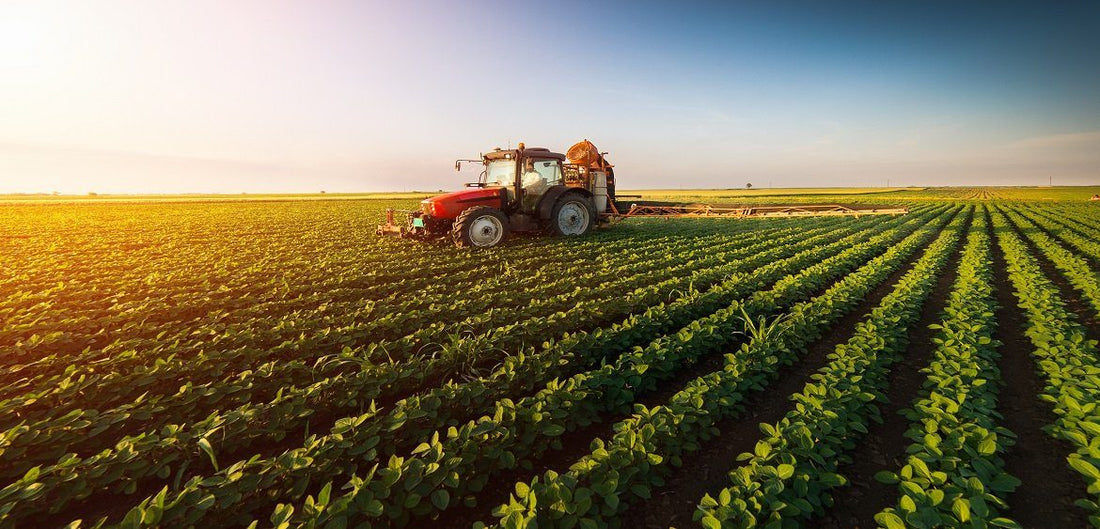Agriculture is almost as old as humankind. Together with hunting, fishing, and gathering, agriculture and cultivation have been widely practiced since primordial times and were the staples of the economy in all ancient civilizations. The nature of humans is still the same and, since inedia doesn’t commend itself to the majority of people, farming doesn’t lose its import continuing to provide the ever-growing humanity with food.
Being an age-long activity contemporary agriculture is undergoing rapid and profound changes caused by numerous societal factors and technological trends. The expansion of the Earth’s populace conditions the surge in food demand which in turn incurs farming produce price increase, reconsidering trade policies, shifting supply chains, and reshaping traditional food delivery routes.
Despite the overall growth of the world population the amount of agricultural workers is on the steady decline implying a more dire labor shortage in the industry for decades to come. Besides, a universally-felt propensity towards organic and sustainably-produced foods which is especially perceptible in western countries spells more attention paid to growing and harvesting thus adding new facets to the modern farming definition.
Eventually, modern farming finds itself on the horns of a dilemma. Farmers aspire to produce higher-quality crops in greater quantities but the number of available hands necessary to do it is permanently shrinking with minute odds that it will be otherwise any time soon. With the influx of workers into agriculture petering out the only alternative lies in employing more efficient tools.

Agricultural Mechanization and Automated Farming
In the world of today, automation reigns supreme. It is leveraged in a plethora of spheres – from office furniture and domestic environment mechanization to medicine and various industries. Agriculture is no exception where modern farming tools and agricultural automation can help to streamline crop production cycle making it more efficient and less labor-consuming.
This vector towards farming automation has become especially apparent in the new millennium with more money channeled into agricultural startups and automated farm systems. TechCrunch estimated the capital investment in such companies at an astonishing figure of $1.5 billion in 2017 which is seven and a half times more than ten years before. The number of startups manifests a significant growth as well with 160 agriculture automation companies vying for financing in comparison to 31 in 2007.
The list of modern farming techniques encompasses all aspects of crop production. Some companies introduce software allowing efficient seed and fertilizer management as well as soil and irrigation control down to the prediction of yield. Other startups offer drones that are leveraged not only with surveillance purposes but can apply crop treatments from above such as fertilizers, pesticides, herbicides, and the like. Still others design and employ automated farm equipment with a range of applications – from grain augers, combines, and automated tractors to fruit picking robots.
However, beckoning such prospects may seem farmers realize that automated agriculture starts not with modern farming equipment but with proper intelligence and reconnaissance that is data collecting.

The Internet of Things: Let the Machines Toil for You
The accurate information about the condition of your farm is delivered by sensors. For instance, remote sensors manufactured by CropX are placed all over the field to notify farmers about an inadequate state of the soil like the lack of moisture in it. However, automation in agriculture makes the immediate feedback of the farmer redundant since automated farming systems include other devices connected to the sensors and gauges to react to the obtained data following the preset steps and procedures. So the irrigation system switches on conveying water when and where it is most wanted.
Such modern farming technology is called the Internet of Things (IoT) and it doesn’t require the presence of a human to control various agricultural processes. Instead, sensors, gauges, and machines function on their own being linked together via the cellular network, mobile Internet, Bluetooth, or any other type of wireless connection. Application of IoT at an automated farm provides resource delivery optimization and maximum efficiency of precision agriculture both of which spell greater yields of higher-quality crops.
The automated farming equipment connected through the Internet is expected to manifest a 20% growth over the next few years which is explained by its potential to be employed at each step in the agriculture value chain.

Agricultural Applications of IoT
Managing a farm is a complex activity involving dozens of operations the implementation of which is conditioned by numerous factors. These factors influence the farmers’ decisions as to the choice and application of seeds, fertilizers, pesticides, and contain information about the weather conditions, expected rainfall, air, and soil temperature, etc. This data is provided by sensors that trigger certain software algorithms that optimize corresponding agricultural processes at automated farms.
Another potential domain for agricultural IoT application is related to resource tracking and management. By employing respective software farmers will be able to register all field applications with the subsequent tracking of these resources to storage locations and elevators. As a result of such optimization, food, and beverage manufacturers can excel at creating marketing value for their businesses.
Modern farming technologies greatly benefit from employing IoT in storage safety. For example, equipping silos and elevators with OPI Systems’ sensors enables to monitor the inside environment conditions and warn people about excessive heat or moisture that can be detrimental to the stored grain or send alerts if a fire is imminent.
Automation in farming isn’t limited to the ushering of state-of-the-art technologies. It encompasses upgrading conventional and introducing modern agricultural tools and machines.

Modern Farm Machinery
An automatic farm boils down to the participation of as little human element as possible which presupposes leveraging self-controlled machines and robots. What impedes a large-scale introduction of such autonomous modern farming equipment is its high price and restricted commercial availability. However, the contemporary mechanization trend spurs many manufacturers to develop cost-effective and reliable farm automation machines.
What is modern farming automated machinery as most of us imagine it? It is probably the mental picture of a tractor, combine, or motorized auger that does all the work by itself without any human participation or indeed intervention. Sharing this vision many companies try to implement it developing their new models with the increasing employment of autonomous features. For instance, modern tractors by John Deere have fully automated line keeping and depth adjustment functions.
Other major tractor manufacturers move along similar tracks aspiring to design remotely controlled and pre-programmed machines that would allow their users to cut down on labor and input costs. Some of their projects have already come to fruition. DOT Technology Corp produced a diesel-powered seeder that can sow an entire field with no human interference by following predefined routes. Rowbot has come up with a modern agriculture machine that can spread nitrogen between cornrows and sow cover crops before the ripe corn is harvested late in the season. To crown all such disparate agriculture automation endeavors, The Hands-Free Hectare project was launched in the UK where completely autonomous farming machines planted, cultivated, and harvested a hectare of barley with no human setting a foot into the field.
Having made an automated wheat farm a reality of the nearest future manufacturers are setting daring plans in other agricultural spheres including those which have traditionally been considered hard to automate. One such domain is horticulture where fruit and vegetable harvesting is a delicate procedure since it should prevent both bruising of gentle crops and damaging plants. First essays in this realm were made by Abundant Robotics and Energid that built robots for picking apples and oranges respectively. They are just pilot samples that are to yet be developed into viable models susceptible to employment in the real orchard conditions.

Elevated Farming
A modern machine in agriculture isn’t just a ground crawler like a tractor or a grain auger. Some of them watch crops from on high providing information of their state as well as identify problem zones, spray chemicals or even blow water off cherry trees ready for harvesting to prevent berries from bursting after heavy rainfall. The use of drones is especially beneficial in cramped row spacing conditions which can be exacerbated by the hillside location of crops. Such conditions are in evidence at Napa vineyards which makes fungicide application a particularly taxing activity. So instead of farmworkers obliged to carry heavy sprayers on their backs, the task was entrusted to a remote-piloted helicopter by Yamaha Precision Agriculture which significantly streamlined the procedure sparing humans a literally backbreaking work.
Conclusion
With the introduction of automation, agriculture becomes increasingly user-friendly with farmers spending less time in the field and more time at computers analyzing data and diagnosing problems. So far completely automatic farms are still a coveted dream but rapid development and sophistication of agricultural machines pave way for the advent of automatic farming as a mainstream trend of the modern economy.




